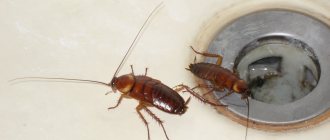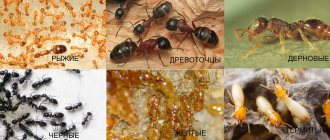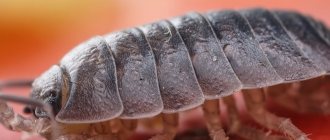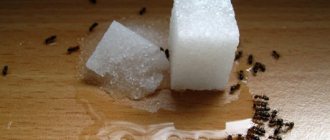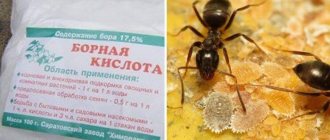Author: Michael Potter Updated: April 21, 2020
The tactics for dealing with centipedes at home and on the street are somewhat different. First, let's put together a guide on how to get rid of house centipedes. To combat house centipedes, there are several very effective approaches that can also be used against other representatives of this superclass - centipedes.
Then we'll talk about how to get uninvited guests out of your garden. And finally, we will select the 5 best remedies that will allow you to forget about the invasion of these creatures.
Who are the centipedes in the house?
Centipedes, millipedes or millipedes are representatives of invertebrates.
Scolopendra.
These are mostly predators that feed on small insects, garden pests, ants, reptiles and even small rodents.
They love warm and humid places, so most of them live in the tropics and subtropics. In Russia they live mainly in the south.
Destruction of insects by chemical means
Chemicals in the form of aerosols or sprays will help get rid of centipedes in a private home. Before using the selected product, carry out the following preparations:
- carefully read the instructions and rules for using the drug;
- take the recommended safety measures - wear gloves, a protective suit, a respirator;
- make sure that there are no children or pets in the room during processing;
- hide all food supplies and take indoor plants to another room;
- After using the drug, close the room and leave it for several hours, and then ventilate the apartment well and carry out wet cleaning.
Centipedes are insect predators that feed on other pests, so poison in the form of bait may be useless and ineffective.
Popular means of combating centipedes are presented in the table:
| Name | Mode of application | Features of use |
| Aquafumigator "Raptor" | Install the device indoors and plug it into the network. As the water and toxic substance evaporate, the room is enveloped in steam that kills insects | The product is effective in the fight against centipedes, cockroaches, flies and other pests. Remove people and pets from the room before using the device. |
| Aerosol Henkel Combat | Spray the aerosol into cracks, under baseboards, between pipes and other potentially dangerous areas | The product has a pungent odor, so you should only work with it wearing a respirator. |
| Suspension "Lambda Zone" | Treat the areas where insects have been spotted with your chosen product. | The drug is effective against insects, while being safe for people and animals |
| Gel GLOBOL | Dissolve the drug in water according to the instructions and pour into a container with a spray bottle. Spray the solution on baseboards, cracks, pipes and other places where pests accumulate. | The product does not have a sharp or unpleasant odor |
| Aerosol Raid | Spray the product in pest habitats | Safe for home residents, no pungent odor |
| Aerosol “Dichlofos Heo” | The effect lasts for a month | |
| Con | Prepare the solution according to the instructions and spray it on the areas where the centipedes were marked. | When working with the drug, use gloves, a mask or a respirator. |
Habitats of centipedes
Insects are ubiquitous in a house or apartment. However, encountering centipedes when the lights suddenly turn on will not be pleasant. Especially considering the speed and impressive views of this animal.
You can meet them:
- In bathroom;
- near a pond;
- under stones;
- in the trunks of rotting trees;
- places where litter is collected;
- compost pits;
- cellars;
- garages.
Signs associated with centipedes
In the old days, people had more respect for animals than they do today. And this is justified: man is closely connected with nature and depends on its well-being. Thus, centipedes were never destroyed, but on the contrary, they observed good changes after meeting them in their home.
- If you take a discovered centipede outside, you won’t have to drive out the others - they will go away on their own.
- If you see a centipede on the street during the day, get ready for a downpour. Apparently, this sign is somehow connected with a certain migration of centipedes to secluded places, due to the anticipation of bad weather.
- If a centipede appeared in the house where a child was born, then he should be a runner or an athlete.
- If you see a centipede at home, then it’s a messenger with good news. Good news should be expected.
Thus, being in the vicinity of such living creatures does not bring any pleasure, but it does not pose any danger either. But the correct attitude towards your life, nature and yourself in general will be a guarantor of harmony in nature. This means benefits and health for the person!
How do you like the article?
Varieties of centipedes
There are no species of centipedes that are adapted to life in the house. They go there in search of reliable shelter and sufficient food. There are several common species that live in houses and apartments.
This living creature looks unpleasant, it is small, but has thin curved legs. This insect is the leader in movement speed. This is an excellent house cleaner. It feeds on flies, cockroaches, fleas and other small insects.
flycatcher
A large number of species of this insect can be found everywhere. These are predators that actively eat many insects. They are not dangerous to humans, but they can bite unpleasantly and their venom is irritating.
Scolopendra
Reasons for appearance
Centipedes love moisture and darkness, so many people may not be aware of their proximity to insects. Centipedes are most active at night. Living in an apartment, they can be observed in:
- toilet;
- bathroom near water;
- cracks under tiles;
- near water pipes
Private houses provide ideal conditions for their living in the form of basements and attics.
In nature, centipedes live in fallen leaves, stumps and tunnels. But in winter, the environment becomes less favorable for them and some of the insects move into people’s homes. An insect can exist normally only if the following conditions are present:
- Food and water.
- Dampness, high humidity.
- Warmth.
- Darkness.
Centipedes feed on pests such as cockroaches, ants and flies. On the one hand, they do not pose a danger to humans, but on the other hand, they are not the most pleasant roommate.
There are several types of centipedes. The most common flycatcher found in our conditions is the common flycatcher. You can recognize it by its yellowish-gray or brown body divided into segments.
Several bluish stripes run along the body, and the number of legs can vary depending on the age of the insect.
The bite of a common centipede causes a slight burning sensation, which does not pose a great danger. But the Chinese centipede (scolopendra) can leave serious burns. The malaise can persist for several days, and the presence of an allergic reaction can be fatal.
How to get rid of centipedes in the house
If a nimble creature with a huge number of legs that moves almost at lightning speed is noticed in a room when the light suddenly turns on, grabbing a slipper will not help. It’s impossible to keep up with them, and it’s also difficult to kill many of them.
Make your home uncomfortable
The very first rule that will help get rid of centipedes in the house is to make it uncomfortable for them to exist. Here are some ways to help eliminate the settlement of living creatures:
- Remove insects that are of interest to centipedes. No food - no point in living indoors.
Centipede on the site.
- Remove dampness and places of stagnant moisture. High humidity is a comfortable place for animals.
- Monitor the condition of pipes, repair holes, update building materials and paintwork.
- Monitor the state of affairs in the cellar, attic and area, in all places where centipedes can live comfortably.
Traditional methods of getting rid of insects
The problem is that insects are not interested in simple food and will not bite on bait. You can, of course, spray or feed the insects that will become food with chemicals, but this is unlikely.
There are a number of drugs that will help remove centipedes. These baits will make their life unbearable; they act poisonously, even if they touch the body of the centipedes.
Sprinkle in places of residence:
- boric acid;
- Cayenne pepper.
Mechanical method
If possible, the centipede can be caught in a jar or sucked up with a vacuum cleaner. The further future is up to the person to decide - to kill or take the animal outside the site.
A good way to catch animals is sticky tape. It is laid out along the paths along which the scary roommates move. Even 30 pairs of legs will not save the animal from this trap.
Creating unfavorable conditions for the existence of pests
In order to independently get rid of centipedes in an apartment, it is necessary to create conditions unsuitable for their existence. First of all, deprive them of food - destroy the insects on which they feed, and the flycatchers themselves will leave the home.
Carry out repairs - seal the cracks through which pests enter, repair pipes and sewers. Get rid of excessive dampness: check the ventilation system, install dehumidifiers and regularly ventilate the room. Centipedes are moisture-loving insects and, in the absence of sufficient humidity, will leave the house in search of more comfortable conditions.
To expel flycatchers, get rid of high humidity in your apartment or house. To this end, check the ventilation, regularly ventilate the room or install a dehumidifier
How to get rid of centipedes on your property
Animals that live outside the house will not harm people. Only a meeting with a scolopendra can be dangerous. To deal with them you will need:
Scolopendras are unpleasant neighbors.
- Clean greenhouses and wood storage areas.
- Look in and move large stones and boulders.
- Check silage heaps and compost pits.
- Clear the house of rags and debris.
Is it worth destroying?
If order has been restored on the site and the yard has been cleared, the question will arise whether it is necessary to get rid of the centipedes. They eat garden pests, working for the benefit of gardeners.
There is a version that centipedes are garden pests. But even in the hungriest year, they prefer to move to other places in search of food rather than change their taste preferences.
The centipede is an ancient and harmless animal
In fact, it is an animal, not an insect. An arthropod that also has other names:
- centipede;
- flycatcher;
- scolopendra.
And she actually has 30 legs, all of which are capable of completely regenerating if injured or lost. There is also a respiratory organ.
Her body consists of segments that allow her to be nimble and agile. The forelimbs have claws for capturing and holding prey, and the remaining legs have sharp spines, with which it easily moves across any surface. Having grabbed onto the victim, the centipede bites it and injects it with paralyzing poison, and then eats it.
But meeting a person for the latter does not pose any particular danger. Except that psychologically her frightening appearance is impressive. Scolopendras come in different sizes - from 2 to 15 cm, but large individuals can hardly be found in human habitats, except in the tropics, and in Russia species larger than 5 cm have not been found.
Flycatchers are predators, and in nature their role is extremely important in maintaining the natural balance and balance of the number of organisms. The name of this living creature speaks for itself - they catch flies, as well as:
- cockroaches and worms;
- midges and moths;
- wood bugs, spiders;
- larvae of other insects.
Without centipedes, it would be more difficult for humans to fight numerous pests of gardens, vegetable gardens, and nature reserves. In total, there are several thousand species of flycatchers in nature, and they are the oldest inhabitants on Earth.
Attention!
A flycatcher can bite a person accidentally. Its poison is not fatal, but the bite can be noticeable depending on the sensitivity of the body. The wound will become red and may hurt. It is enough to treat the bite site with an antiseptic and do not scratch if itching occurs.
How dangerous is the centipede?
It is impossible to answer unequivocally the question of whether a centipede is dangerous in an apartment or not. She herself is not the first to attack a person. But if you try to catch it with your bare hands, it can sometimes bite and release poison.
Its jaws are too weak for the skin of an adult, but small children may suffer. However, it usually ends with a slight burning sensation. A large centipede that appears in the house is more dangerous, since the bite of this centipede causes severe pain, swelling of the tissue around the wound, and an increase in temperature. And the mucus secreted from the paws can cause a burn on human skin.
If there are insects in the apartment, then the benefits of the centipede are much greater than the harm. She will catch all the parasites and go look for a new place to live.
Hot red pepper
Another cheap and accessible remedy against centipedes is regular hot pepper. Its smell repels insects, and if it gets on the legs and body, it burns them very badly.
Red pepper can be purchased in powder form at the store, or you can make the product yourself if you have a few pods of hot pepper on hand. In terms of effectiveness, both store-bought and homemade peppers are approximately the same, but fresh ones have a more pronounced aroma and are more repulsive to centipedes.
Hot pepper powder should be poured into all corners where insects may hide, but so that children and animals cannot detect or touch it. The only disadvantage of this product is that it does not sterilize or kill insects outright, which is why its effectiveness is lower than that of boric acid.
What centipedes live next to humans?
Apartments and houses are inhabited mainly by common flycatchers or centipedes; under favorable conditions, they may not leave their homes and spend their entire lives in them, and this is neither more nor less, but 6-7 years.
flycatcher
The centipede, contrary to its name, does not have 40 legs. In an adult, the body is divided into 15 segments, each of which has a pair of long striped legs attached. They are so thin at the ends that it is simply amazing how they can support the weight of a centipede. The last pair of legs exceeds the size of the flycatcher itself, which is why it is not immediately possible to recognize where its antennae are and where its legs are.
The flattened body is light brown or yellow in color with longitudinal dark stripes, the length reaches 6 cm. Compounded eyes are located on the sides of the head. Keen vision and fast movement speed provide the centipede with excellent hunting abilities. By nature, arthropods are predators. Small insects become its prey. In apartments these can be cockroaches, bedbugs, fleas, flies. With its legs, the flycatcher captures prey, injects poison into it and absorbs the immobilized trophy.
Interesting! Centipedes do not belong to the class of insects, but are included in the class of labiopods. But given that all small-sized crawling and flying representatives of the fauna are commonly called insects, in everyday life centipedes are also classified among them.
Scolopendra domestica
Scolopendras are one of the most interesting creatures among centipedes. In Southern Europe, in the Crimea, the ringed scolopendra lives and takes root well in colder latitudes. Unlike their tropical “relatives,” these centipedes in the house do not pose a threat to the life or health of people and eat synanthropic insects. Only occasionally can they accidentally bite a sleeping person. Their sting has much in common with that of a bee. The affected area experiences burning, pain, redness and swelling.
On a note! A heating pad with water at 45°C will help reduce pain after a scolopendra bite. According to scientists, heat exposure destroys the arthropod's venom.
What does it look like
Almost everyone knows what centipedes look like. The external structure of centipedes is simple. The body is divided into a separate head and torso, consisting of a varying number of segments.
The head is a fusion of the acron and 4 segments of the body . It also has a pair of antennae and 3 pairs of limbs. In labiopods, the head limbs resemble those found in insects.
The body of an adult centipede reaches a length of up to 60 mm. Basic color: from gray with a yellowish tint to bright brown. 3 purple or blue parallel stripes are visualized on the back.
How many legs
Arthropodologists can tell you how many legs centipedes have. They argue that the number of legs changes dynamically as the flycatcher grows and ages. And their number directly depends on the number of body segments. At first, the newborn centipede has 1 to 4 segments with 4 pairs of striped limbs.
As the body grows, new legs appear . In an adult, there are a maximum of 15 pairs. In this case, the outermost pair of limbs is longer than the others and more closely resembles whip-like antennae.
Dichlorvos "Varan"
The modern insecticide “Varan” is designed to combat most types of insects that can settle in an apartment, including centipedes.
This composition is safe for households, but 100% kills pests, leaving no chance of survival. After application, the residual amount of the drug guarantees protection against the return of insects. "Varan" does not have any odor. One has only to spray the aerosol on the floor and walls, and insects caught in the drops of the substance will begin to die.
Although manufacturers assure that Varan is safe for people, it is still better to leave the room during treatment. For a better effect, you can re-treat after a day.
Chamomile
Another cheap pharmaceutical remedy against centipedes is powder from chamomile inflorescences, it is called “Pyrethrum”. This product does not poison or kill insects, but its aroma forces pests to leave the home.
The method of application is the same as with red pepper - the powder should be poured onto the floor and into the cracks. A huge plus of the product is that it is absolutely safe for household members. As a preventive measure, you can sprinkle the powder on the floor for a day once a month, and then clean it up - this will guarantee that the centipedes will not return.


